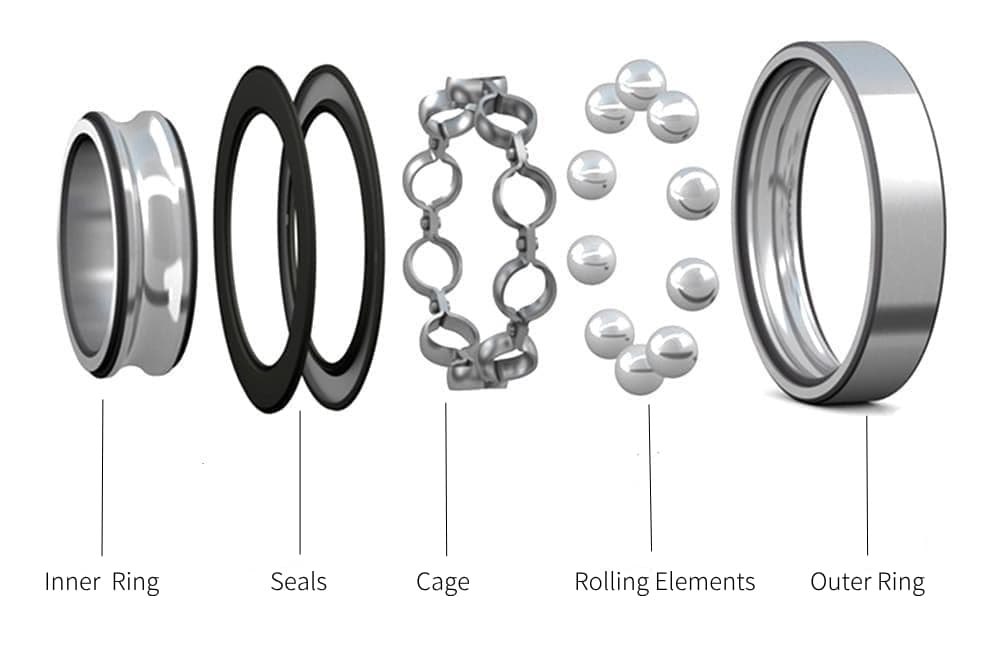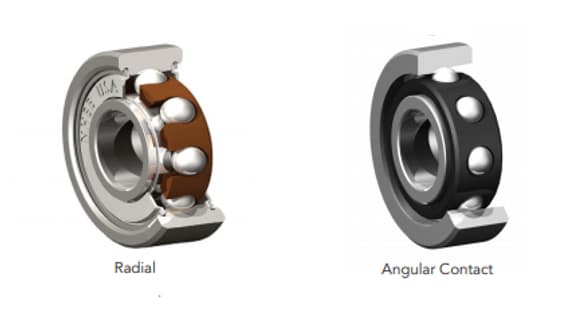

Sign in
New customer? Start here
Frequently Asked Questions About Dental Bearings
CONTENTS
- What Are Dental Bearings?
- Why Are Dental Bearings Important in Dentistry?
- What Are the Types of Dental Bearings?
- What Are the Benefits of Ceramic Bearings Over Steel Bearings?
- What Are the Common Causes of Dental Bearing Failure?
- How Can You Extend the Life of Your Dental Bearings?
- Are Ceramic Bearings Worth the Investment?
- How Do You Choose the Right Dental Bearings for Your Practice?
Dental bearings are used in dental handpieces, which are tools dentists use for various procedures. These bearings help the handpieces spin smoothly and efficiently, allowing for precise movements during treatments.
Choosing the right dental bearings is crucial for maintaining precision and performance in dentistry.
What Are Dental Bearings?
Dental bearings are small, precision-engineered components found in dental handpieces that support the rotation of the turbine.
Purpose of Dental Bearings:
- Smooth Rotation: Dental Bearings lower friction between moving parts, allowing the turbine to spin freely and maintain high speeds.
- Durability: High-quality dental bearings resist wear and tear from frequent use.
- Precision: Dental Bearings provide stability during procedures, ensuring the accuracy of dental surgeries.
- Heat Reduction: Effective bearings reduce heat while the handpiece is running.
Dental bearings ensure that dental burs rotate smoothly by keeping them aligned for efficient operation.
Composition of Dental Bearings
Dental bearings include four main components:

- Outer Ring: This is the outer part of the bearing that fits into the handpiece and provides stability.
- Inner Ring: Inner Ring: The inner ring attaches to the rotating shaft (like the dental bur) and helps it spin smoothly.
- Rolling Elements: These are small balls or rollers that sit between the inner and outer rings. They facilitate smooth movement by reducing friction during rotation.
- Cage: The cage keeps the rolling elements in place, making sure they are evenly spaced and properly aligned within the bearing.
Together, these components work to provide smooth and efficient rotation in dental handpieces.
Why Are Dental Bearings Important in Dentistry?
Impact on Handpiece Performance
Dental bearings help handpieces rotate smoothly. They reduce friction, allowing the handpiece to work with less resistance and better control. Efficient dental bearings also lower wear and tear on the equipment.
Patient Comfort and Precision
They enable smooth rotation of the handpiece parts, which reduces unwanted noise and vibrations.
This makes the experience more comfortable for both the dentist and the patient, helping everyone focus better during treatments.
What Are the Types of Dental Bearings?
Steel vs. Ceramic Bearings
Differences Between Steel Bearings and Ceramic Bearings:
- Performance
Steel Bearings: They can handle high speeds but may generate more heat and noise.
Ceramic Bearings: Produce less heat and noise compared to steel bearings, leading to smoother operation.
- Durability
Steel Bearings: Typically have a shorter lifespan compared to ceramic bearings.
Ceramic Bearings: Tend to last longer than steel bearings under similar conditions.
- Cost
Steel Bearings: They are more affordable than ceramic bearings.
Ceramic bearings: Ceramic bearings cost more because manufacturers use advanced materials and special processes to make them.
Radial vs. Angular Contact Bearings
- Radial Bearings
Radial bearings support loads that are vertical to the shaft. They allow rotation and can accommodate both radial and axial loads.
Radial bearings typically feature a crown retainer, which holds the rolling elements (balls or rollers) in place. This design allows for efficient load distribution and reduces friction.
People commonly use radial bearings in applications where radial loads are predominant. Such as electric motors, pumps, and standard dental handpieces.
- Angular Contact Bearings
Angular contact bearings support both radial and axial loads. This makes them ideal for applications that need precise alignment and higher load capacity. Their design allows them to handle loads from different directions.
Angular contact ball bearings usually have a full retainer design. This design offers better stability and keeps the rolling elements evenly spaced. As a result, they can handle higher axial loads than radial bearings.
Manufacturers frequently use them in high-speed applications and equipment where both radial and axial loads are present. Such as in dental handpieces, machine tools, and automotive applications.

Comparison of Radial and Angular Contact Bearings:
- Load-Bearing Capacity:
Radial Bearings: They are primarily used to support radial loads, while their capacity for axial loads is limited.
Angular Contact Bearings: These bearings can effectively support both radial and axial loads.
- Operating Use:
Radial Bearings: Radial bearings are best for applications where there are mostly radial loads and minimal axial load.
Angular Contact Bearings: They are ideal for tasks that require accurate axial alignment. They can also support higher load capacities.
What Are the Benefits of Ceramic Bearings Over Steel Bearings?
Extended Equipment Lifespan
Ceramic bearings are made from advanced ceramic materials. They experience less friction compared to steel bearings, which contributes to their longer lifespan.
Reduced Friction and Heat Generation
Ceramic bearings operate at lower temperatures because they produce less friction during use compared to steel bearings.
They also make procedures more comfortable for patients by reducing noise, vibration, and heat.
Lighter and Quieter Operation
Ceramic bearings are lighter than steel bearings, which makes dental handpieces easier to handle.
What Are the Common Causes of Dental Bearing Failure?
Wear and Tear
Regular use of dental bearings leads to gradual degradation because of continuous friction, heat, and wear over time.
Inadequate Lubrication and Maintenance
Proper lubrication is essential to prevent bearing failure because it lowers friction and wear between the moving parts.
Common maintenance mistakes that reduce dental bearing life include:
- Not Enough Lubrication
- Too Much Lubrication
- Ignoring Dirt
- Skipping Inspections
- Improper Handling
Contamination and Improper Sterilization
Dirt and contaminants can get into the dental bearings, causing increased friction and wear. This can lead to decreased performance and a shorter lifespan.
Harsh chemicals or methods used during sterilization can damage the dental bearing materials, leading to corrosion or degradation.
Recommendations for Proper Cleaning and Sterilization Protocols:
- Gentle Cleaning
- Appropriate Sterilization Methods
- Regular Inspections
- Proper Lubrication
- Storage
How Can You Extend the Life of Your Dental Bearings?
Proper Installation Techniques
Step-by-step guidance on ensuring dental bearings are installed correctly to maximize performance.
Routine Maintenance and Lubrication
Regularly cleaning and lubricating dental bearings can make them last longer and work better.
Differentiating Between Oil-Lubricated and Grease-Packed Bearings:
Oil-Lubricated Bearings:
- Lubrication Type: These bearings use liquid oil for lubrication.
- Cooling: Oil provides better cooling, which can help in high-speed applications.
- Maintenance: You may need to perform more frequent maintenance, as you must replace or top up the oil regularly.
Grease-Packed Bearings:
- Lubrication Type: These bearings are filled with grease, a thick lubricant that stays in place.
- Cooling: Grease provides less cooling compared to oil but can still protect against wear.
- Maintenance: They generally require less frequent maintenance since the grease lasts longer and does not need to be replaced as often.
Best Practices for Sterilization
Always follow the manufacturer's guidelines for sterilizing handpieces and use gentle cleaners to avoid damaging the bearings.
Shielded bearings help protect against contamination during sterilization by keeping dirt and debris out. Their design includes integral shields that keep foreign particles from entering. This helps ensure the bearings remain clean and function properly.
Are Ceramic Bearings Worth the Investment?
Cost vs. Long-Term Savings
Ceramic bearings may have higher initial costs. Investing in fewer replacements, less downtime, and happier patients can lead to a good return. This makes them a smart choice for dental practices.
Performance Benefits for High-Speed Handpieces
Ceramic bearings generate less friction and heat. This helps them operate smoothly at high speeds, reducing the risk of overheating and wear.
Practitioners also have a more comfortable experience with reduced vibration, which makes them happier during procedures.
How Do You Choose the Right Dental Bearings for Your Practice?
Factors to Consider
The dental bearing must handle the expected load without breaking. It should also work well at the operating speed to prevent overheating.
OEM bearings come from the same company that made the original equipment. This guarantees a perfect fit and reliable performance. They tend to be more expensive but come with a warranty.
Aftermarket bearings come from third-party manufacturers and are usually cheaper. However, their quality can differ. Picking trusted brands is important.
Customization Options
Custom dental bearings are manufactured to fit the specific needs of a dental practice. You can choose different materials for strength and durability, depending on your equipment.
They ensure a perfect fit, which improves how well the handpiece works. These tailored solutions also boost durability and lower maintenance needs, leading to better care for patients.
Common Myths About Ceramic Bearings
Myth 1: Ceramic Bearings Are Fragile
Modern manufacturing techniques use advanced materials to make durable ceramic bearings that can handle a lot of stress. Heat treatment processes improve their toughness, making them reliable and strong for many uses.
Myth 2: Ceramic Bearings Don’t Require Maintenance
Ceramic bearings need less maintenance than other types of bearings. However, they still require regular care for the best performance.
Conclusion
Choosing the right dental bearings is important for good performance and durability in dental handpieces.
Dental practices should consider their bearing needs and explore how ceramic bearings can enhance their operations and patient care.
Frequently Asked Questions (FAQs)
How often should dental bearings be replaced?
Dentists should typically replace dental bearings every 6 to 12 months.
Can ceramic bearings be used in all dental handpieces?
Many dental handpieces can use ceramic bearings, but not all of them do.
What signs indicate that dental bearings need maintenance?
Signs that dental bearings need maintenance include increased noise, vibration, and reduced performance of the handpiece.
Is switching from steel to ceramic bearings difficult?
Switching from steel to ceramic bearings is usually straightforward, but you may need to make some adjustments.
Keep Learning







